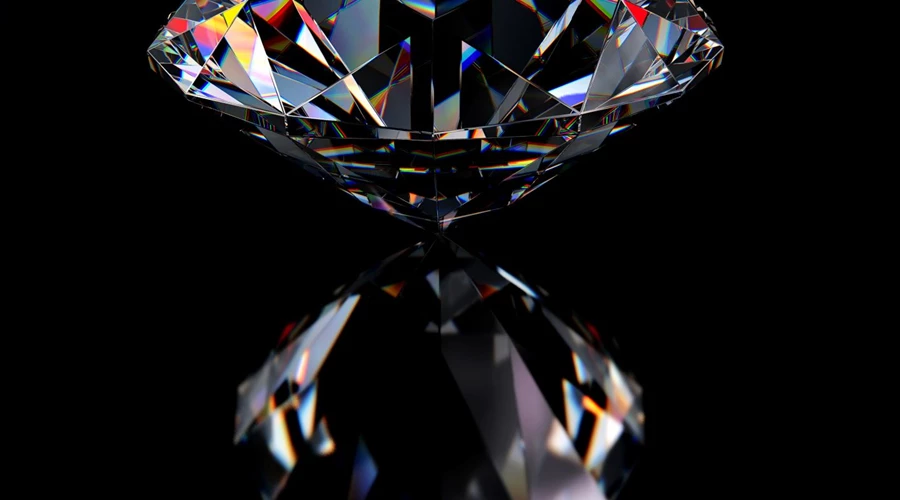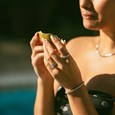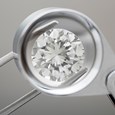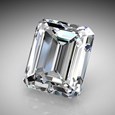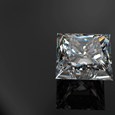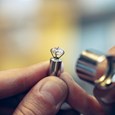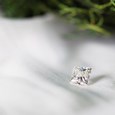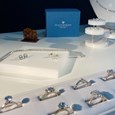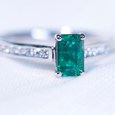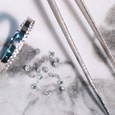Sign up for our Newsletter
How to buy a diamond with Va-Va-VOOM, Part 2
December 24 2022
This article covers the dark arts of crown and pavilion angles which, despite sounding like something best left to maths geeks with protractors in their pockets, are really very simple to understand.
If you’ve read Part 1, you should be fluent in the language of table and depth percentages. This means you’re already halfway towards being able to hand-pick a diamond with va-va-voom.
What are diamond crown angles and pavilion angles?
For those of you just joining us, the top part of a diamond is called the crown and the bottom part – the pointiest part – is the pavilion:
CROWN: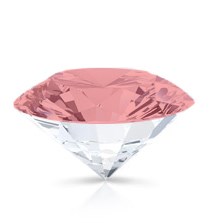
PAVILION: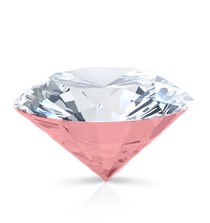
When we talk about crown and pavilion angles, we’re talking about the angle of the crown kite facets or pavilion main facets in relation to the horizontal plane of the table. Yes, I know that sounds like gobbledygook so allow me to demonstrate:
CROWN ANGLE:
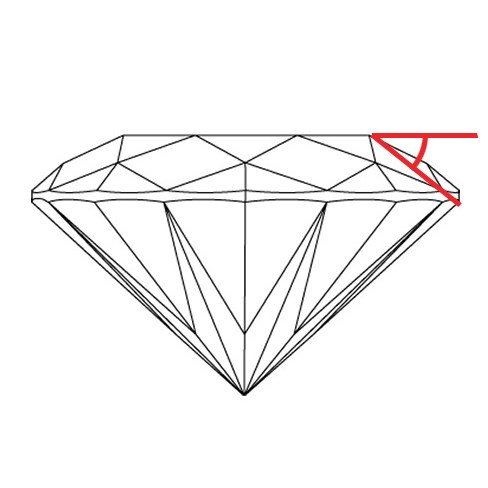
The crown angle is actually an average. All eight kite facet angles are measured, then the average is taken and rounded to the nearest 0.5°.
PAVILION ANGLE:
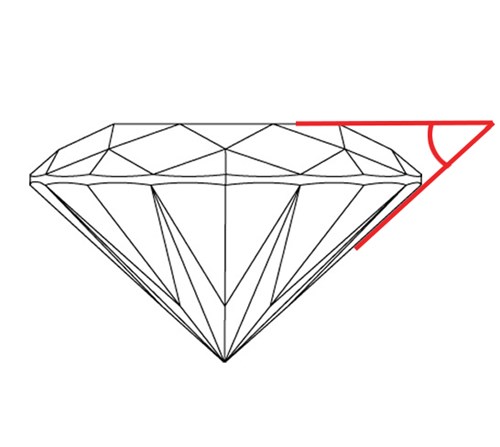
The pavilion angle is also an average of all eight pavilion main facets. However, unlike crown angles, pavilion angles are rounded to the nearest 0.2°.
Why are crown and pavilion angles so important?
Wikipedia states: “The relationship between the crown angle and the pavilion angle has the greatest effect on the look of the diamond.”
Wikipedia isn’t lying. Crown and pavilion angles are enormously important because they affect light return – essentially, they control how bright the diamond is. Notice though that it’s the relationship between the crown angle and pavilion angle that’s important. They work as a team. We’ll get into that in more detail soon. But first, we need to know:
What crown angles do
Crown angles control the amount of light that is returned to the viewer (known as light return) or dispersed as fire. A shallower crown angle gives you more light return, making the stone look brighter, whereas a steeper crown angle disperses more light, giving you more fire. Here are two overly simplified diagrams to explain:
SHALLOW CROWN:

Here we see the shallow angle of the crown allows the light to be returned to the viewer.
STEEP CROWN:
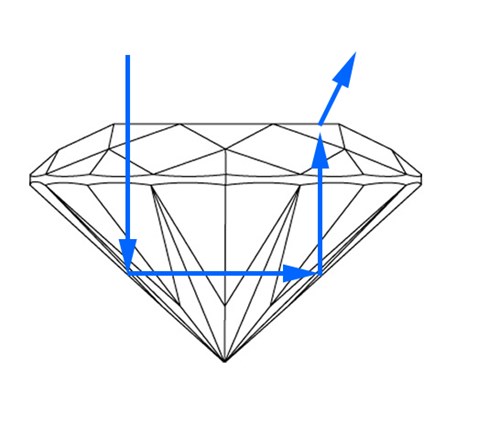
Here, a slightly steep crown disperses the light away from the viewer as fire. Incidentally, this means your diamond may look more magnificent to others than it will to you, which is perfect if you’re only buying one to make someone else jealous.
It’s important to remember that the difference between a shallow crown angle and a steep crown angle is likely to be very small. If you're already choosing an Excellent cut grade, as you should be, then the crown angle will most likely be somewhere between 33° and 35°. The ideal crown angle is one that optimizes light return without overly sacrificing fire.
What pavilion angles do
The important thing to remember about the pavilion facets is that they control light inside the diamond. As light enters through the top of the stone, the pavilion facets act as mirrors, bouncing the light back up to the viewer. When the pavilion angle is too shallow or too steep, the light is forced out of the base of the diamond.
In an Excellent cut diamond, the pavilion angle should be between 40.6° and 41°.
The push-me-pull-you of crown and pavilion angles
As mentioned before, the crown angle and the pavilion angle work as a team. If you change one you should change the other, as they both affect the path of light through the diamond.
If the pavilion angle is steep, you should seek a crown angle at the shallower end of the range. And if the pavilion angle is shallow, look for a steeper crown angle.
The perfect crown and pavilion angle combo
Unfortunately, there is no such thing as the perfect crown and pavilion angle combination. However, many people will cite a crown angle sweet spot of 34.5 and certainly, you’re unlikely to go wrong with that whatever the pavilion angle.
As far as the pavilion angle is concerned, the closer to the middle of the range you can get, the better. At 40.6° and 41°, you’ll be much more reliant on getting the right crown angle to balance the “shallow” or “steep” pavilion whereas a pavilion angle of 40.8° will work well with a much bigger crown angle range.
Beyond excellent
As with table and depth percentages – and anything else for that matter – use crown and pavilion angles to fine-tune your diamond buying choices.
Always start with an Excellent cut grade – that way you know you’re getting the best proportions, as well as polish and symmetry. Then use table percentages, depth percentages, crown angles and pavilion angles to find the best of the best.
And remember, at the end of the day, it’s all about appearance. When you’re admiring your stunning diamond that’s bursting with fire and brilliance, you won’t give two hoots about its crown angle – and neither will anyone else. But if knowing about crown angles helps you find that diamond in the first place, then it’s worth the trouble.
Shop for lab-grown diamonds here
If you'd like to find out more, contact us here.
-
Ethically Sourced Diamonds
-
Handmade in the UK
-
FREE Shipping Worldwide
-
60 Day Returns

